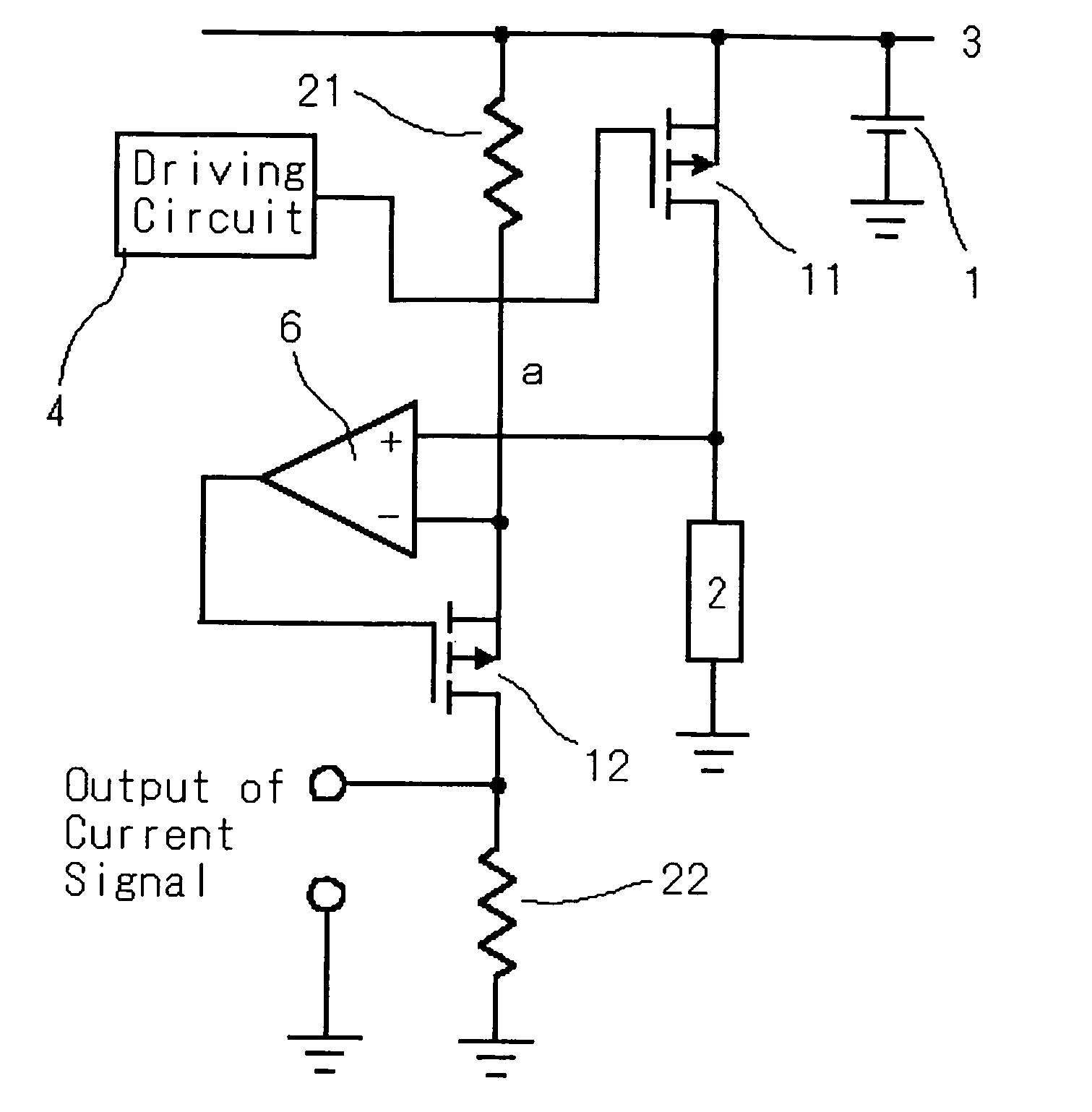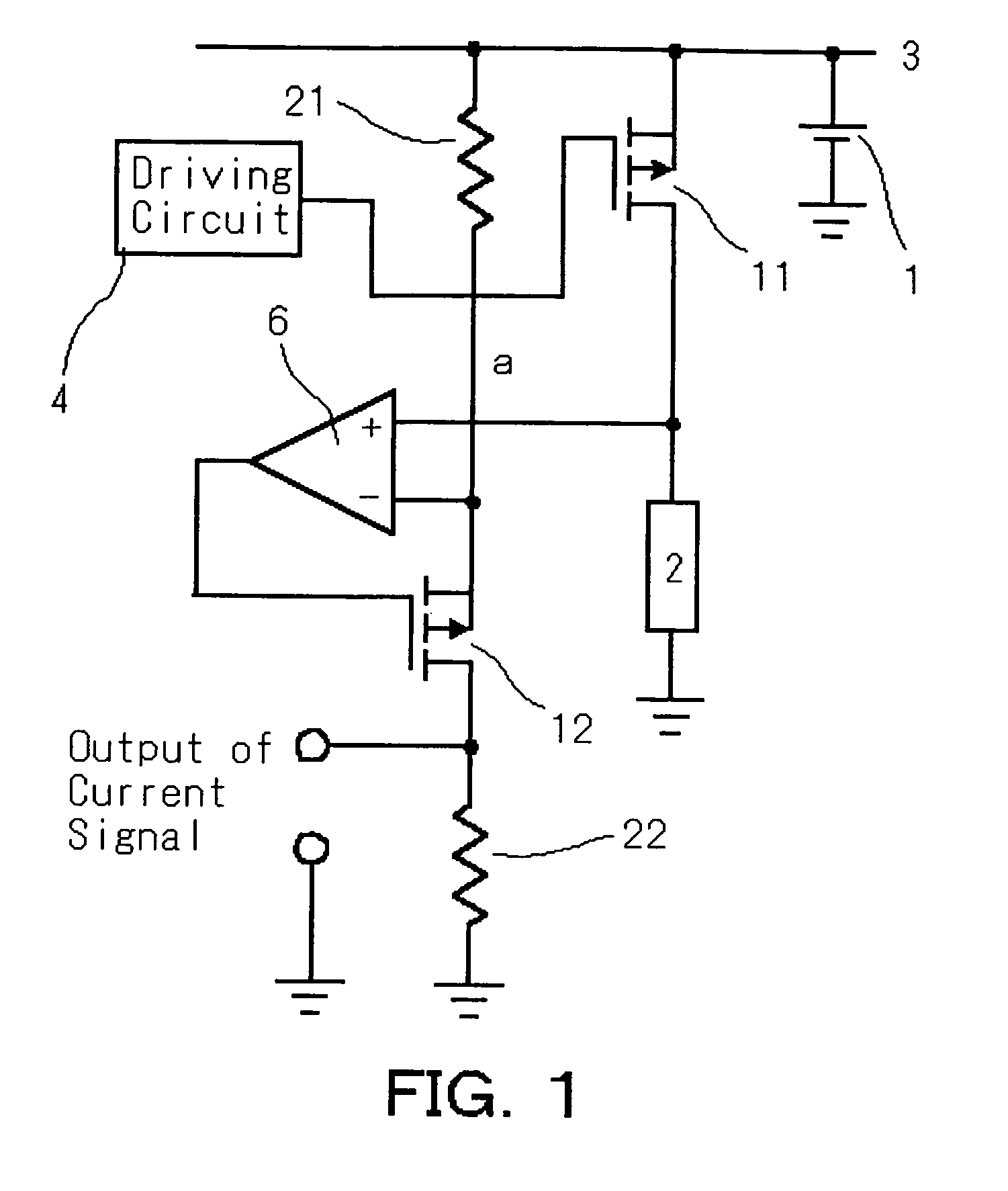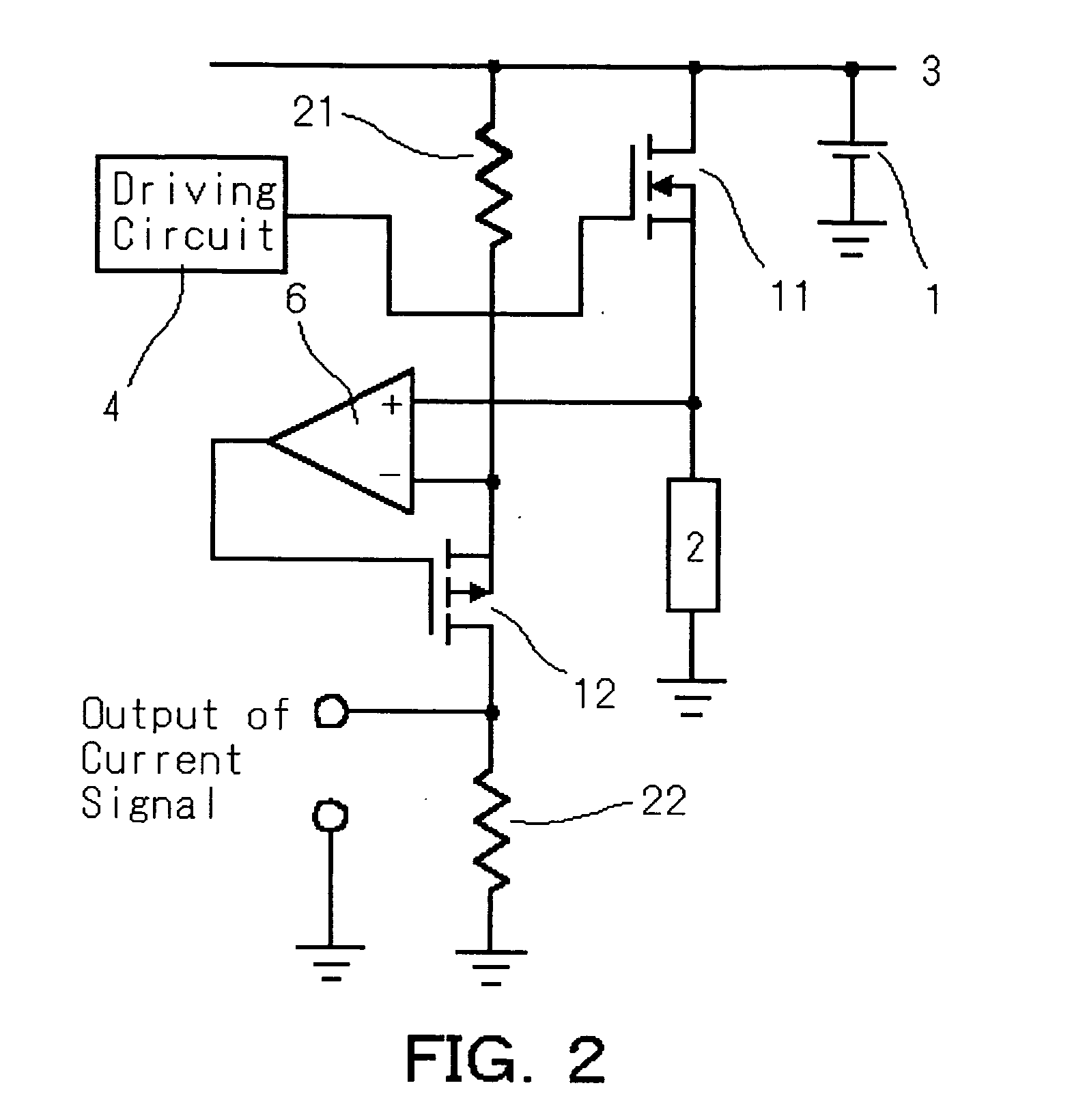Switching circuit
a technology of switching circuit and current wave, which is applied in the direction of pulse technique, process and machine control, instruments, etc., can solve the problems of difficulty in amplifying current wave up to high frequency and maintaining high gain capacity, and achieve low cost, high speed, and low impedance
- Summary
- Abstract
- Description
- Claims
- Application Information
AI Technical Summary
Benefits of technology
Problems solved by technology
Method used
Image
Examples
embodiment 1
[0032] The first embodiment of the switching circuit according to the present invention is shown in FIG. 1. 1 is an input power source, 2 is a load, 3 is fixed potential, 4 is a driving circuit, 6 is an amplifier, 11 is a main switch, 12 is a subsidiary switch, 13 is a third switch, 14 is a current detecting switch, 15 is a high side switch, 21 is a first resistance element, and 22 is a second resistance element.
[0033] The switching circuit according to the present embodiment comprises a main switch 11 composed of p-channel MOSFET, whose on-voltage shows resistance characteristics wherein a gate terminal of the main switch 11 is connected to a driving circuit 4. And a source terminal of the main switch is connected to the fixed potential 3 and a drain terminal thereof is connected to the load circuit 2. In addition, the fixed potential 3 may be connected to the drain terminal of the main switch 11 and the load circuit 2 may be connected to the source terminal of the main switch 11....
embodiment 2
[0036] The second embodiment is shown in FIG. 2. This embodiment is almost the same as that of the first embodiment. This embodiment is characterized in that the main switch 11 is composed of n-channel MOSFET. Detection of current can be also conducted by the same way as that of the first embodiment. However, polarity characteristics of output voltage of the driving circuit 4 is different from that of the first embodiment, that is, in the first embodiment, the main switch 11 becomes conductive by negative gate potential to the source potential, on the other hand, the main switch 11 becomes conductive by positive gate potential to the source potential in the case of this embodiment.
embodiment 3
[0037] The third embodiment is shown in FIG. 3. In this embodiment, the first resistance element 21 is connected to a source terminal of the third switch 13, wherein a drain terminal is connected to the source terminal of the subsidiary switch 12. And the gate terminal of the third switch 13 is connected to the driving circuit 4 and the gate signal of the third switch 13 is so constructed as to synchronize with that of the gate signal of the main switch 11. That is, since the main switch 11 is p-channel MOSFET in this embodiment, the third switch 13 is also p-channel MOSFET.
[0038] Because in the case of the third embodiment, the gate signal of the main switch 11 is so constructed as to synchronize with that of the gate signal of the third switch 13, when the main switch 11 is on off-state, and the third switch 13 is also on off-state, it is possible to prevent large current from flowing through the first resistance element 21. Therefore, a current detecting circuit with electric po...
PUM
 Login to View More
Login to View More Abstract
Description
Claims
Application Information
 Login to View More
Login to View More - R&D
- Intellectual Property
- Life Sciences
- Materials
- Tech Scout
- Unparalleled Data Quality
- Higher Quality Content
- 60% Fewer Hallucinations
Browse by: Latest US Patents, China's latest patents, Technical Efficacy Thesaurus, Application Domain, Technology Topic, Popular Technical Reports.
© 2025 PatSnap. All rights reserved.Legal|Privacy policy|Modern Slavery Act Transparency Statement|Sitemap|About US| Contact US: help@patsnap.com



